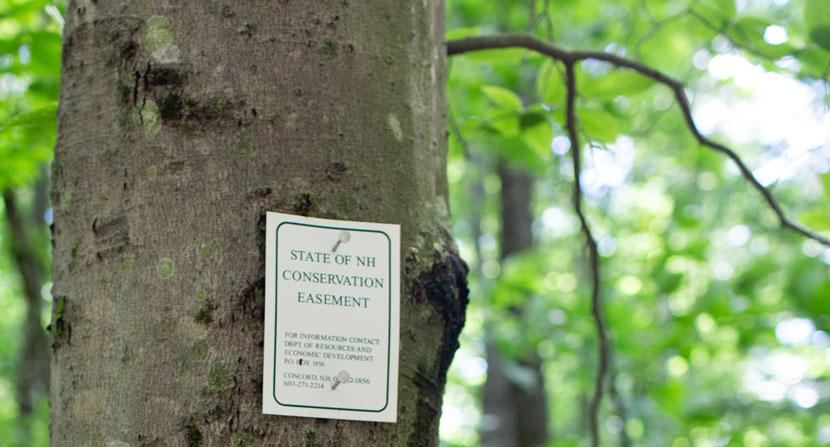- Tags:
- Advocacy

State of New Hampshire Conservation Easement Boundary Marker. Photo: Emily Lord/Forest Society
Conservation easements are a critical tool land trusts and municipalities use to ensure the long-term protection of important open space and undeveloped areas. The Conservation Easement Tax Incentive is an important incentive to encourage private landowners to voluntarily protect their properties and the natural resources on them. In 2015, the U.S. Congress recognized the significance of this tax incentive by making it permanent and by increasing the benefits to landowners. To learn more on how conservation easements work click HERE.
While the IRS oversees the complex rules governing the donation of easements, the important point to remember is that a landowner can never deduct more than the fair market value of the gift. Unfortunately, some people have corrupted the intent of the conservation easement tax incentive. They have instead been promoting the donations as just another way for investors to make a quick buck. In fact, IRS data released in 2017 show that a sampling of these transactions enabled investors to claim, on average, deductions valued at nine times the amount of their original investment.
To be clear, these abuses of the charitable deduction for land conservation donations are just tax shelters with little connection to the legitimate work of land trusts nationwide to permanently protect forested landscapes, wildlife habitats and the other lands with conservation values. Congress and the IRS should team up to stop this abuse of the tax laws.
The Forest Society is working with our partners at the Land Trust Alliance to end this abuse. Forest Society President, Jane Difley, has signed onto THIS LETTER addressed to Congressional leaders in support of support of H.R. 4459 / S. 2436, the Charitable Conservation Easement Program Integrity Act. To learn more about this legislation click HERE.
